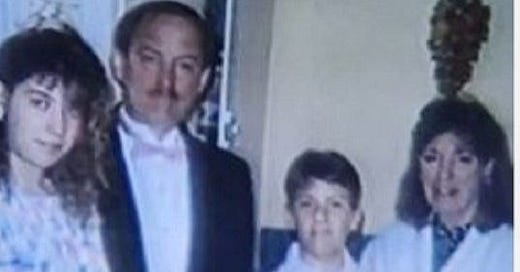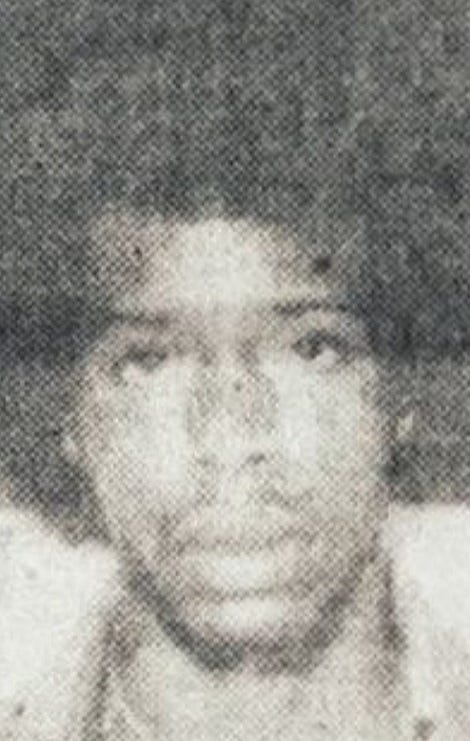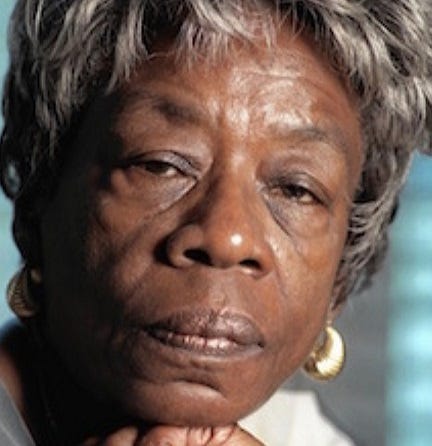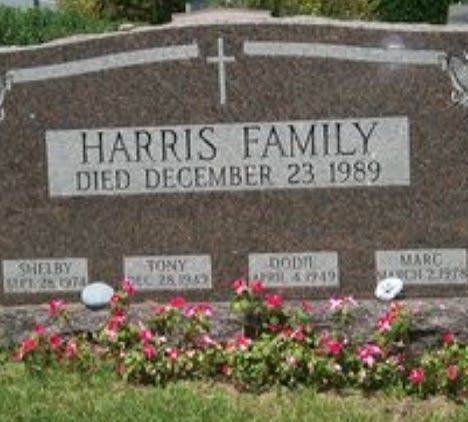A Christmas Nightmare: The Harris Family Murders
One Dark Night
Christmas had always been a special time for Warren (Tony) Harris, his wife Delores (Dodie), and their children, fifteen-year-old Shelby and eleven-year-old Marc, and the holiday season of 1989 was no exception. With their sprawling house in the quaint little town of Dryden, New York decorated from top to bottom in preparation for the festivities to come, they went out of their way to make family, friends and anyone else who came their way feel welcome.
On Friday, December 22, forty-one-year-old Dodie, who operated a gift shop out of a renovated barn that sat fifty yards from the main residence, had the place to herself for most of the day. At around 4:00, the kids arrived home from school. As is often the case when winter settles upon the Finger Lakes region of New York, the ground was covered in snow, and more was on the way.
If their routine stayed true to form, the kids spent some time unwinding in front of the tv while their mother prepared dinner. With Tony, an executive at an electronics equipment distribution center, due home around 5:30, the afternoon was quickly ticking away. It was during this ninety-minute interval in which the unsuspecting threesome were in the home alone that a killer had come calling.
While there is no way of knowing what set the stage for the nightmare to come, it has been speculated that the family’s ordeal began when someone knocked on the door asking for help. Those closest to Dodie were unanimous in their belief that she would not have hesitated to let a complete stranger in the house to use the phone.
It is surmised that Tony walked in as the horrifying events were already in progress. Caught off guard by the unimaginable situation, he had been helpless to protect the ones he loved. By night’s end, the only member of the Harris household left alive would be a kitten named Shadow.
A Shocking Discovery
At around 7:00 a.m. the next morning, a neighbor phoned police to report that a smoke alarm was going off at the Harris residence. A half hour later, an officer was on the doorstep of 1886 Ellis Hollow Road.
After knocking several times and receiving no answer, the patrolman tried the knob and found that it was unlocked. When he stepped inside, he detected the faint aroma of smoke, which he described as the smell one would expect to find after a kitchen mishap. It was only when he spied a gas can sitting in the living room that he suspected a fire had been deliberately set.
As he made his way through the seemingly empty dwelling, he noticed that the power was out, and the phone lines had been cut. To add to the eerie feeling in the air, the deafening silence that filled the rooms gave the impression that if there was anyone else on the premises, they were no longer among the living.
After carefully making his way up the stairs, he had peered into the first bedroom, where he made a grim discovery. Inside the charred space, lay the body of what appeared to be a teenage girl. Realizing that he had stumbled upon a crime scene, he quickly called for reinforcements.
While he waited for backup to arrive, the officer looked around the bedroom, being careful not to compromise the integrity of the scene. It was apparent from the condition of the young girl’s body that she had been shot in the head. Her state of undress indicated that she had also been sexually assaulted. Though she wasn’t bound, she was wearing a blindfold over her eyes. Curled up beside her on the floor was the body of a dog, also deceased, who showed no outward signs of physical trauma.
When the officer ventured into a neighboring bedroom, he found the bodies of three additional victims — two adults and one child. All three had been hogtied and had pillowcases placed over their heads before being shot, execution-style.
Although the bodies showed signs of having been burned, the damage was minimal. Before the morning was over, the victims were positively identified as Tony, Dodie, Shelby and Marc Harris.
After scouring the property for clues, detectives discovered that the family’s van was missing from the garage. Later that day, the vehicle was found abandoned in the parking lot of a local mall, presumably by the killer or killers.
The medical examiner found that Shelby had been tortured, raped and sodomized before being shot to death. It was estimated that her ordeal, and that of the rest of the family, had lasted from around 6:00 to 10:00 p.m.
Investigators determined that the upstairs had been doused with gasoline and set on fire to destroy evidence. Fortunately for them, the blaze had fizzled out, leaving much of the crime scene intact.
Oddly, it was also noted that the areas where the murders had taken place looked as though they had been professionally cleaned after the fact. This led detectives to believe that the perpetrator(s) were experienced in the janitorial field.
When the neighbors were interviewed, one of them recalled seeing a black male riding a bicycle up and down the street just before sundown on the previous evening. Since it got dark around 5:00 p.m., this would have put the bicyclist in the vicinity of the Harris home when Dodie and her children were inside getting ready for dinner. Having already established that the tire tracks from the family’s van were the only ones present in the freshly fallen snow, it seemed likely that the killer had arrived by some means other than an automobile.
Earlier that same evening, a woman driving home with her young child in the backseat told of observing a man fitting the same description peddling his bike along the highway in the snow. Seeing that he was clearly struggling, she had been tempted to stop and offer him a lift, but with a fussy toddler to contend with, she had thought better of it. Though she hadn’t known it at the time, her decision to keep going may very well have saved her life.
When news of the murders hit the airwaves, investigators learned that someone had used the family’s credit cards to purchase hundreds of dollars' worth of clothing, jewelry and electronics at the mall where the van had been discarded.
Suspects Emerge
After speaking to the clerks who had overseen the transactions, a composite drawing was made of the suspects. When the images were distributed to the public, tips came in identifying the pair as fifty-four-year-old Shirley Kinge and her thirty-three-year-old son, Michael, who also went by the name Anthony Turner.
A look into the Kinges family revealed that Shirley was a part-time house cleaner who also worked behind the reservation desk at a popular bed and breakfast. Though her son had been employed sporadically as a janitor, his arrest record revealed that he seemed to prefer robbery to blue collar work.
As the investigation heated up, another neighbor came forward to say that he had witnessed a black male, accompanied by an older female, driving past his house in the Harris’ van at 6:50 a.m. on December 23. Upon viewing the sketches of Michael and Shirley Kinge, he positively identified them as the pair he had seen on the morning in question.
Since this encounter would have occurred only minutes before the call was placed to police regarding the smoke alarm, the lead seemed promising. Unfortunately for investigators, after giving it some thought, the witness walked back his claim, saying that he hadn’t seen the couple well enough to make an accurate identification.
On February 7, 1990, police knocked on the door of the apartment where Michael Kinge was staying with his girlfriend and their two-year-old. When he failed to answer, they had forced their way in.
Once inside, they were confronted by the suspect, who was seated and holding a shotgun. After getting off one shot, he was killed by officers in a hail of bullets. A ballistics expert would later confirm that the weapon in Kinge’s possession was the same one that had delivered the fatal wounds to the Harris family.
While some questioned the accuracy of this account, Kinge’s history with law enforcement helped to shed light on his state of mind. After learning that he had allegedly told friends after one of his many run-ins with police that he wished he had just let them shoot him, the general consensus was that he had chosen suicide by cop over a lifetime of incarceration.
A Question of Guilt
With the main suspect out of the picture, detectives turned their attention to his mother, Shirley. Although they had both been seen at the mall making purchases with the Harris’ credit cards, it was Shirley who had forged Dodie’s name on the receipts.
When confronted with this damning information, she had acknowledged both using the cards and knowing exactly where they came from but denied having any part in the murders. Even so, the fact that she had known for six weeks that her son had killed a family in cold blood led to speculation that she was in deeper than she cared to admit. After weighing their options, authorities charged her with burglary, arson, possession of stolen property and forgery.
While investigators believed that Shirley had been at the scene of the crime at some point, they weren’t entirely convinced that she had a hand in the actual murders. If she was involved, it seemed more likely that she was an accessory after the fact than an active participant in the carnage.
During the trial, a gas can taken from the Harris home on the morning the bodies were found was entered into evidence. An officer testified that fingerprints lifted from the container matched those of Shirley Kinge. After learning that there was irrefutable proof that she had been inside the house, it hadn’t taken long for the jury to find her guilty on all charges. After receiving a sentence of seventeen to forty-four years behind bars, Shirley was handed over to the state and the matter officially closed.
Two and a half years later, following an internal investigation, it was determined that a member of law enforcement had planted the fingerprint evidence in the hopes of solidifying the case against Shirley Kinge. Not long after this bombshell revelation came to light, her conviction was overturned, and she was released from custody. In the coming months, all charges against her were dismissed and her previous convictions vacated.
In 2007, Ms. Kinge sued the state of New York for a sum of $500 million. When all was said and done, she walked away with $286,312 in compensatory damages. While it was true that she had suffered an injustice, the judgement had rubbed some members of the community the wrong way. They pointed to the fact that she had enjoyed the fruits of her son’s misdeeds without showing any sympathy towards his victims as proof that she wasn’t deserving of such a hefty monetary award.
While that may very well have been, the decision stood, and she walked away a wealthy woman. In 2015, she passed away at the age of eighty, taking any secrets she may have held to the grave.
While the full extent of what the Harris family had endured in their final hours will never be known for certain, it was undoubtedly a night of terror that must have seemed endless. After reviewing the evidence, few could deny that their suffering at the hands of a stranger they had welcomed into their home out of the goodness of their hearts is truly the stuff of nightmares. The assumption that Tony, Dodie and Marc had been forced to listen helplessly as Shelby was being violated in the next room only adds to the gut-wrenching nature of their ordeal.
Illustrating that animals are often more compassionate than their human counterparts, the family dog, Annie, had chosen to stay by Shelby’s side rather than finding a place to hide as flames threatened to consume the home’s second story.
Knowing instinctively that something terrible had happened, instead of saving herself, she had snuggled close to the teenager she had known and loved. After remaining glued to the spot throughout the night, she eventually succumbed to smoke inhalation.
Time Moves On
Life went on in the village of Dryden, but things were never quite the same after the murders. While Christmas was still a time of celebration, the season brought back memories of that fateful December evening when a family who were loved by all opened their door to someone they believed was in need and paid for their kindness with their lives.
For more stories like these, please check out my books at amazon.com/author/cindyparmiter
Resources:
·ithacajournal.com
·newspapers.com
·latimes.com
·syracuse.com
·law.umich.edu
·cnycentral.com
·ediscussions.blogspot.com
·orlandosentinel.com
·Village of the Damned: Welcome to Dryden (2017)
Images used under provisions of the Fair Use Act for purposes of reporting and education.








